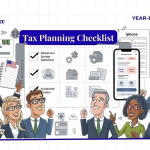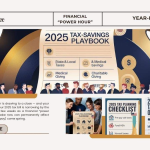Retirement Plan: Strategies to Maximize Your Savings Game
Retirement Plan: Many people lack a clear retirement savings goal. This illustrates the importance of identifying and addressing “breaking points” in your retirement plan. Recognizing these risks and employing innovative strategies can help ensure a secure and fulfilling retirement.
Starting your retirement planning means facing unexpected issues, such as job loss or medical bills. These can hurt your savings. Many have had to adjust their retirement savings plans due to such events. By identifying and planning for your own “breaking points,” you can safeguard your finances and achieve your dream retirement.
Key Takeaways
- Identify and address critical “breaking points” in your retirement planning strategy.
- Implement effective strategies to maximize your retirement savings
- Recognize the impact of unforeseen circumstances on your retirement savings
- Develop a comprehensive plan to mitigate potential pitfalls
- Seek professional financial advice to optimize your retirement savings plan
Understanding the Critical “Breaking Points” in Retirement Plan

Knowing the key “breaking points” is vital as you plan for retirement. These are moments that can have a significant impact on your savings and financial well-being. By identifying these points, you can make informed decisions to boost your retirement savings and secure a prosperous future.
Retirement plans: Provided by the IRS – Read and Know More
Defining “Breaking Points” in the Context of Retirement Savings
“Breaking points” in retirement planning are significant moments that alter how effectively you save for retirement. They can come from your age, job stage, or money situation. For example, losing your job early due to unexpected events can significantly impact your retirement savings.
Other important milestones include turning 50 or 60. At these ages, you can contribute more to retirement accounts. Major life events like getting married, getting divorced, or having a child are also significant. Understanding how these events affect your savings is crucial to a robust retirement plan.
Also Read: Stock Market: How to Financially Prepare for Breaking Points
Identifying Your Personal “Breaking Points” for Retirement Readiness
To identify yourbreaking points, start by examining your finances. See what you earn, spend, owe, and own. This shows your current financial situation and helps you set realistic savings goals.
Then, consider your age and career stage. Are you just starting or nearing retirement? Your situation affects the breaking points you should watch out for and how to save more.
“The early bird catches the worm, but the second mouse gets the cheese.” – Steven Wright
Lastly, think about what you want in retirement. Do you plan to travel, enjoy hobbies, or live a simpler life? Your dreams will guide you to the key savings milestones.
Here are the steps to find your breaking points:
- Assess your current financial situation
- Set realistic retirement savings goals
- Consider your age and career stage
- Determine your desired retirement lifestyle
- Create a retirement planning checklist
By following these steps and noting your limits, you can create a solid retirement plan. This plan will help you save more and secure your financial future. Remember, overcoming these points requires discipline, commitment, and the ability to adjust your plan as things change.
Strategies to Maximize Your Retirement Plan Savings Game
Planning for retirement is crucial to saving effectively and living comfortably. Utilize innovative strategies and tools to enhance your savings and ensure you have sufficient funds.

Optimizing Your Retirement Investment Portfolio
Improving your investment portfolio is a big step in saving more for retirement. Put your money in different investments based on how much risk you can handle and when you plan to retire. For example, the NPS has improved over time, making starting and offering new features easier.
Spread your money across stocks, bonds, and real estate to increase your chances of making more money while keeping risks low. This mix can help you navigate market fluctuations and grow wealth over time.
Investing more money in SIPs can potentially double your savings in 20 years. By investing regularly and wisely, you can use compounding to grow your retirement savings.
Leveraging Tax-Advantaged Retirement Accounts
Using retirement accounts with tax benefits is another smart move. In India, options like the SCSS, PPF, and NPS offer tax perks and help you save more for retirement. They also cut down your taxes.
The tax deduction for retirement savings is going up from 10% to 14% of your salary. By putting money into these accounts, you can pay less tax and save more for retirement. Plus, you can add an extra $7,500 to your 401(k) or 403(b) if you’re over 50.
Also Read: Update Your Basic Income Tax Knowledge: Ultimate Guide 2024
Developing a Comprehensive Savings Retirement Plan
Creating a detailed plan is key to saving as much as possible for retirement. This plan should include regular savings, effective debt management, and risk mitigation. Set clear goals and work towards them to stay on track for your desired retirement.
Think about these things when making your plan:
- Figure out how much you need for your retirement based on your lifestyle and costs
- Look at your current money situation, including what you earn, spend, and owe
- Know how much risk you can take and what investments you like
- Make a plan for saving and investing regularly
- Check and update your plan often to make sure it matches your goals and life changes
To save Rs 5.3 crores over 30 years, you must set aside Rs 17,000 monthly. Start early, continue investing to maximize compounding, and reach your savings goals.
Many people fear not having enough money in retirement. This fear often comes from investing too safely. They invest in debt and income-generating assets instead of stocks. People worry about not having enough because of their investment choices after retiring.
Employing these strategies and a detailed plan can help you save more and secure a more stable future. Remember, planning for retirement is a long process that requires discipline, patience, and action. You can enjoy a more comfortable retirement by managing your savings effectively now.
Wrap up
Starting your retirement planning is key. Remember the essential moments that can change your savings. Knowing these can help you make wise choices to save more for retirement.

To improve your retirement savings, spread out your investments and adjust them often. Utilize tax-friendly accounts, such as IRAs and 401(k)s, to grow your money and reduce your tax liability. The limit for IRA contributions is $6,000 annually, with an additional $1,000 for those over 50. The annual contribution limit for 401(k)s is $19,500, with an extra $6,500 allowed for those 50 and older.
Creating a detailed savings plan is crucial to achieving financial freedom in retirement. Experts recommend saving 80% to 90% of what you earn now. Aim to save 12 times your current salary. It may seem daunting, but start early and consistently contribute to your retirement accounts.
You can start getting Social Security at 62. However, you will get less money. If you wait until 70, you will receive a higher benefit. Additionally, consider how taxes impact your retirement income. You might pay 0%, 15%, or 20% in India on gains. Other income sources, such as interest and pensions, may be taxed more heavily.
Remember, protecting your money and making smart choices now can help you avoid problems later and ensure a good retirement.
Utilize these tips and focus on your goals to overcome the challenges of retirement planning. You can achieve financial freedom in your later years through hard work and effective planning.
FAQs On Retirement Plan

Q: What are the most critical factors to consider when planning retirement?
A: Key factors include figuring out your retirement costs, like healthcare, which can be $157,500 for a 65-year-old. Also, make the most of your retirement account contributions, like the $23,000 limit for 401(k)s. Spread your investments across different types to balance risk and stability.
Q: What strategies can I employ to maximize my retirement savings?
A: To boost your retirement savings, fully use employer matching on your 401(k). Start planning early to take advantage of compound interest for growth. Continue to update your plan to align with your goals and life changes.
Q: How can I effectively manage my finances during retirement?
A: Manage your retirement money well by planning your withdrawals carefully. Use the bucket strategy for managing withdrawals, based on when you need the money and the level of risk you can tolerate. Also, be aware of the required minimum distributions (RMDs) from retirement accounts, which begin at a certain age to avoid fines.
What are “breaking points” in retirement plans?
“Breaking points” are pivotal moments that can significantly impact your savings and financial well-being. They can occur at specific ages or when achieving financial goals. For instance, losing your ability to work early can hurt your retirement savings.
How can I identify my personal “breaking points” for retirement readiness?
To identify your personal “breaking points,” examine your finances and establish clear retirement goals. Consider your age, income, spending habits, debts, and retirement goals. This will help you see what challenges you might face.
What strategies can I use to optimize my retirement savings?
To boost your retirement savings, ensure your investments align with your risk level and time frame. Utilize tax-saving accounts, such as the Senior Citizen Savings Scheme and Public Provident Fund. Also, a detailed plan should be included, including regular savings, effective debt management, and risk mitigation strategies.
How can I protect my capital while saving for retirement?
Keeping your savings safe is crucial, as losing a significant portion can be challenging to recover. To protect your retirement savings, diversify your investments, regularly review and adjust your portfolio, and maintain an emergency fund. This way, you won’t use your retirement savings for unexpected costs.
What role do wealth creators play in the economy and retirement plan?
Wealth creators are crucial to the economy because they generate jobs and drive economic progress. As a retirement planner, learning from their strategies can help you make better financial choices. It can also help you benefit from their economic success.
Thank you for reading this post, don't forget to subscribe!






